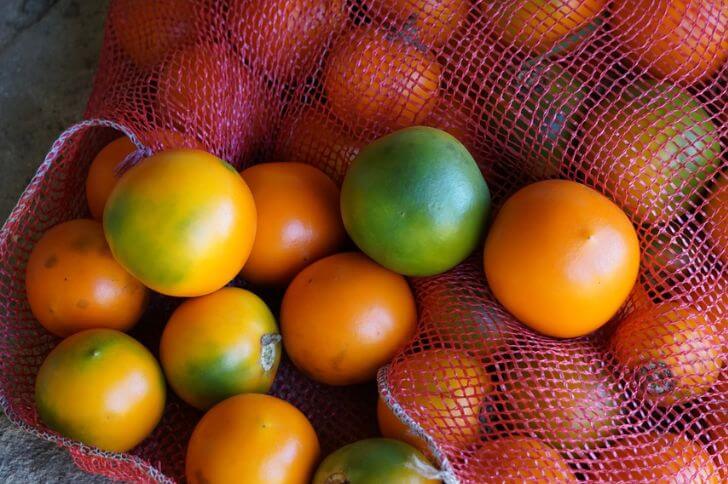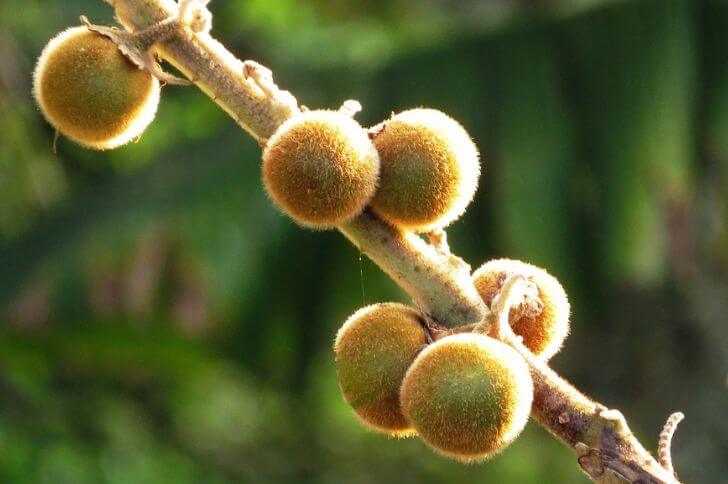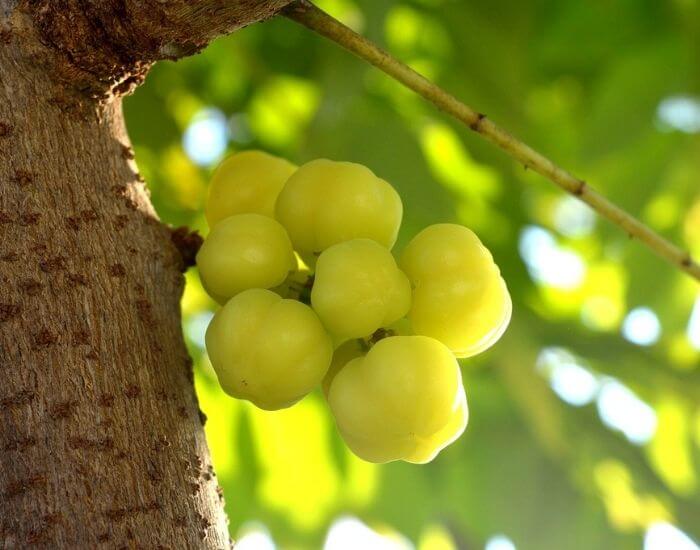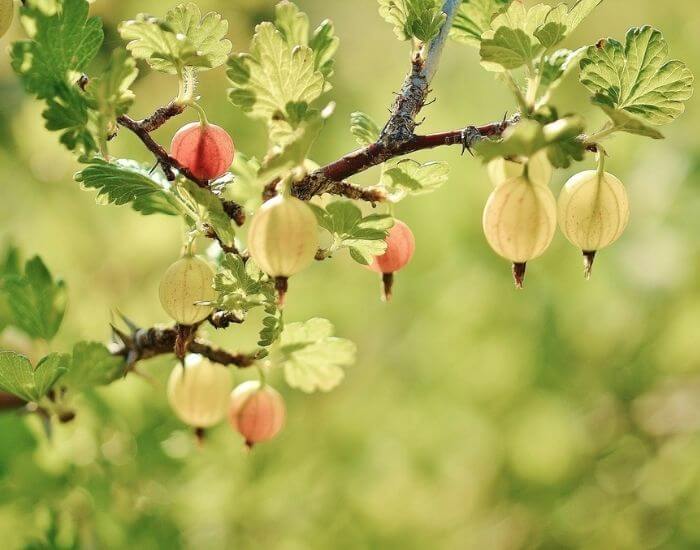Lulo or solanum quitoense is a tropical fruit that is native to northwestern South America. It looks like a tomato with a thick orange colored skin. These fruits are borne from an 8 feet tall tree that is in the nightshade family; solanaceae.
If you are looking for a new exotic fruit to try, you’ll love this small fruit. Below, I’ll explain how to identify a ripe lulo fruit, how to use it, and most importantly how to make lulo juice.
What is lulo fruit?
Lulo is a spanish word “little orange”. However young fruits are green and hard. Notice the hairy surface. As the fruit grows and ripens, the skin turns orange, is smooth and the hairs fall off easily. The color is reminiscent of persimmon fruit.
When cut, this orange fruit has 4 sections with a greenish pulp and pale yellow seeds. Though its exterior seems tough, you can easily break it with your fingers just like tomatoes.
What are other names for lulo? In Costa Rica and Ecuador, this little orange fruit is known as naranjilla and its scientific name is solanum quitoense.
Varieties

Are there different varieties of naranjilla fruit? Yes, there are four main varieties; Sela(jungle), thorny, smooth, chonto morado(purple variety). What time of the year are lulo fruits available?
They are an all-year round type of fruit and are in abundance in winter months. However, like other plants in their nightshade family, the trees are susceptible to diseases. This means that it’s hard to cultivate this exotic fruit.
How to use Naranjilla
If you want to eat the fruit raw, simply cut it in half, scoop out the flesh and discard their thick rinds. Like tomatoes, their seeds are small and can be eaten.
If you have other recipes in mind, say making a lulo drink, we also recommend removing the pulp and discard the rinds. Ripe naranjillas are soft and their pulp is easy to squeeze out. Below we’ve included some yummy lulo recipes you can try at home.
What does lulo taste like?
Well, it’s difficult to succinctly describe the flavor of lulo because it is so unique. Lulo fruit has an intense, almost citrusy flavor with notes of pineapple and passionfruit. Its sweetness balances out the sharpness of its tartness making it incredibly delicious. Those who have tried lulo describe it as refreshing and delightful with a slight hint of sourness.
Related Read: Learn about Jatoba fruits
Lulo fruit recipes
What are my favorite naranjilla fruit recipes? Try these:
Lulo Juice (Lulada)
Lulo juice is a delicious and unique drink that has been gaining popularity in recent years. Originating from the Andean regions of Colombia, Lulo juice is made from the lulo fruit and its taste can range from sweet to tart depending on how ripe it is when harvested.
Ingredients:
-1 cup of lulo pulp
– 2 tbsp lime juice
-2 cup of cold water
-1 cup of sugar
Instructions:
1. Combine the lulo fruit, cold water, lime juice and sugar in a bowl
2. Use a fork to mash them together (A wooden spoon will also get the job done)
3. Once you’ve achieved consistency, stir the juice and add crushed ice
4. Pour the juice into a pitcher and enjoy!
Naranjilla Ice Cream
Lulo fruit ice cream is an exciting and unique new way to enjoy a classic treat. This frozen dessert combines the sweet, tart flavor of lulo with creamy, traditional ice cream for a delightful combination of fruity and creamy flavors.
The vibrant green color of the fruit adds a beautiful hue to any dish or treat it is added to, making it a great choice for creating visually appealing desserts.
Ingredients:
-1 cup heavy cream
-1 cup whole milk
-2 cups frozen lulo fruit, chopped
-1/2 cup sugar
-1/4 teaspoon ground nutmeg
Instructions:
1. Combine the heavy cream, milk, frozen fruit, and sugar in a blender and blend until smooth.
2. Pour the mixture into an ice cream maker and churn according to the manufacturer’s instructions.
3. Sprinkle nutmeg on top before serving.
Tip: You can add maracuyas to your lulo ice cream for extra sweetness
Lulo jam
Lulo Jam, also known as naranjilla jam, is a delicious spread made from the tropical fruit lulo. This jam is popular in Latin American countries such as Colombia and Ecuador, where it is enjoyed on toast, croissants and other pastries. It has a sweet-tart flavor that makes it a great accompaniment to any breakfast or snack.
Ingredients:
-1 cup chopped Lulo fruit
-1/2 cup sugar
-1/4 teaspoon vanilla extract
-pinch of salt
Instructions:
1. Combine all in a small or medium-sized saucepan. Medium heat. Cook, stirring frequently, until mixture thickens and bubbly.
2. Let the jam cool slightly before serving.
Nutritional facts

What nutrients do lulo fruits offer? Naranjillas are a good source of vitamins K, A and C and fiber. You also get iron, phosphorus, iron, and sodium. Also note that the amount of nutrients is dependent on the variety and region where the fruit grows.
Where to buy lulo fruit in USA
This fruit has become increasingly popular in recent years for its unique flavor and nutritional benefits. If you’re looking for where to buy lulo fruit in the USA, there are several options available.
For those in the US, many Latin grocery stores carry lulo fruit when it is in season. Some specialty produce stores also have it during peak times of the year like winter. Additionally, online retailers offer lulo year-round by shipment or delivery service. Lastly, some farmers’ markets will stock lulo when it is in season—it’s always worth asking around to see if any local vendors have it available.
How to store
If you’re lucky enough to get your hands on some lulo fruit, it’s important to know the best way to store it in order to preserve its freshness and flavor. The key to storing unripe lulo fruit is keeping them in a fridge. If stored properly, unripe naranjilla fruits can last up to a month.
To start, choose lulo fruits that are unripe, free from any soft spots or bruises. Rinse off any dirt before storing them. Wrap each individual fruit in paper towels or newspaper. Then place each piece of parchment-wrapped fruit into a plastic bag with several holes poked for ventilation, then seal the bag shut so no moisture can escape. Then refrigerate.
Unfortunately ripe lulos are highly perishable. They’ll only last for a day or two. We recommend you prepare your jams, jellies or ice cream then refrigerate and consume within a week or two.
FAQs
Lulo fruit vs Persimmon
Lulo fruit and persimmon are two unique, nutrient-rich fruits that have many similarities as well as differences. Despite their similar appearance, these two exotic fruits offer distinct flavors and nutrition benefits.
Lulo is a small citrusy yellow-orange fruit native to Colombia and Ecuador. It has a tart and sweet taste.
Persimmon is an orange-red sweet fruit that originated in China but is now grown around the world. It has a flavor reminiscent of honeydew melon with hints of cinnamon spice.
How do you eat lulo?
To eat the lulo fruit properly simply cut off the top and bottom of the skin with a knife and pull it off like you would an orange or grapefruit. Inside you will find numerous small seeds engulfed by slightly juicy flesh that has a mild sweet taste to it. You can enjoy eating the seeds along with the flesh of the lulo.
Is lulo a fruit or a vegetable?
Botanically speaking, lulo is classified as a fruit since it develops from the ovary of a flower and contains seeds within its juicy pulp. Therefore, lulo can be considered a type of fruit related to tomatoes and persimmons. For this reason, many recipes call for lulo to be used in desserts and smoothies where sweet fruits are usually featured.
Where is lulo native to?
Naranjilla is a tropical fruit native to South America. It is primarily grown in the highlands of Panama, Costa Rica and Ecuador.
Can you grow lulo in Florida?
The answer is yes! With the right amount of sun and soil moisture, lulo plants can thrive in Florida’s warm climate.
Growing naranjilla requires well-draining soil that won’t get too soggy when watered. In areas with high humidity it is important to make sure the soil doesn’t become compacted around the roots of the plant. In addition to making sure they get enough sunlight each day – at least six hours – lulo plants need plenty of water during their growing season.
Sources:
Hi There,
My name is Jenny. I’m the Chief Editor at Try Green Recipes and besides making yummy and healthy foods for my kids, grandkids, and friends. I’m new to the blogging world but I believe what I have to share is unique and will bring joy to your home. If you are adventurous and want try something tasty, let’s get started.

